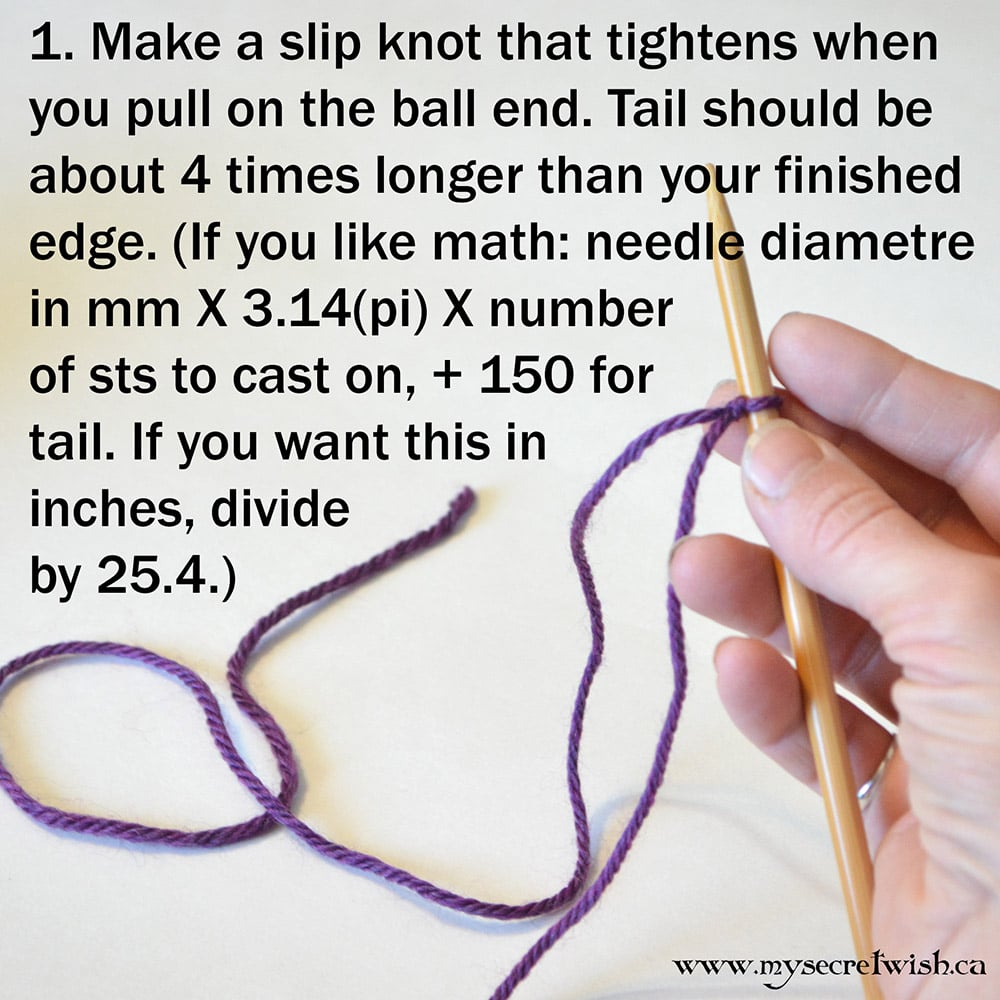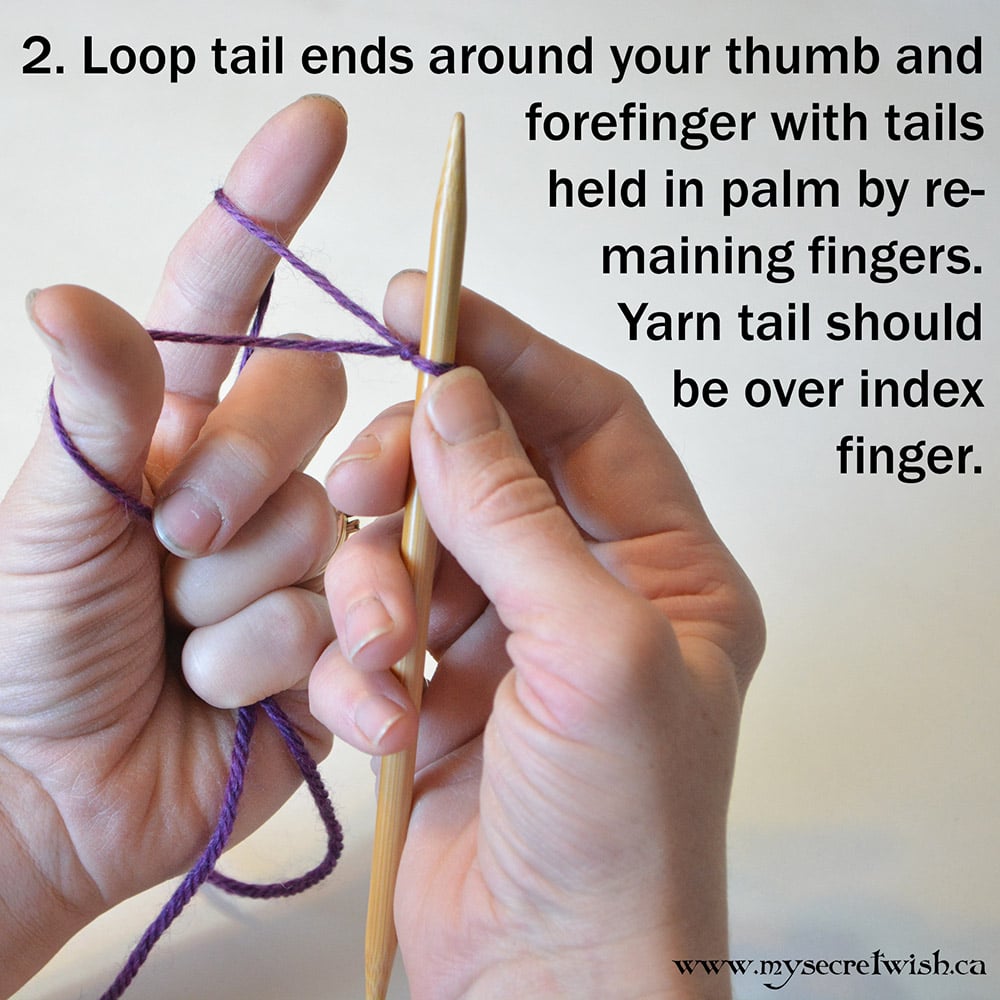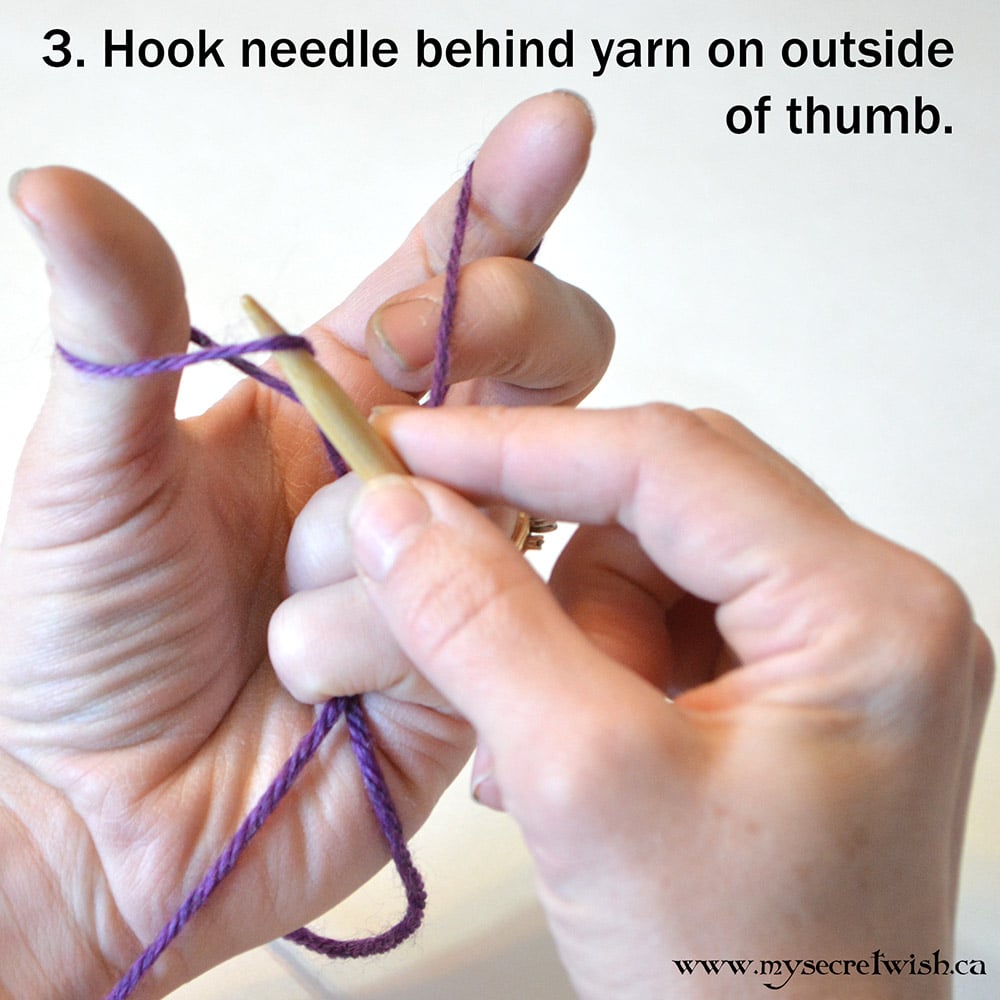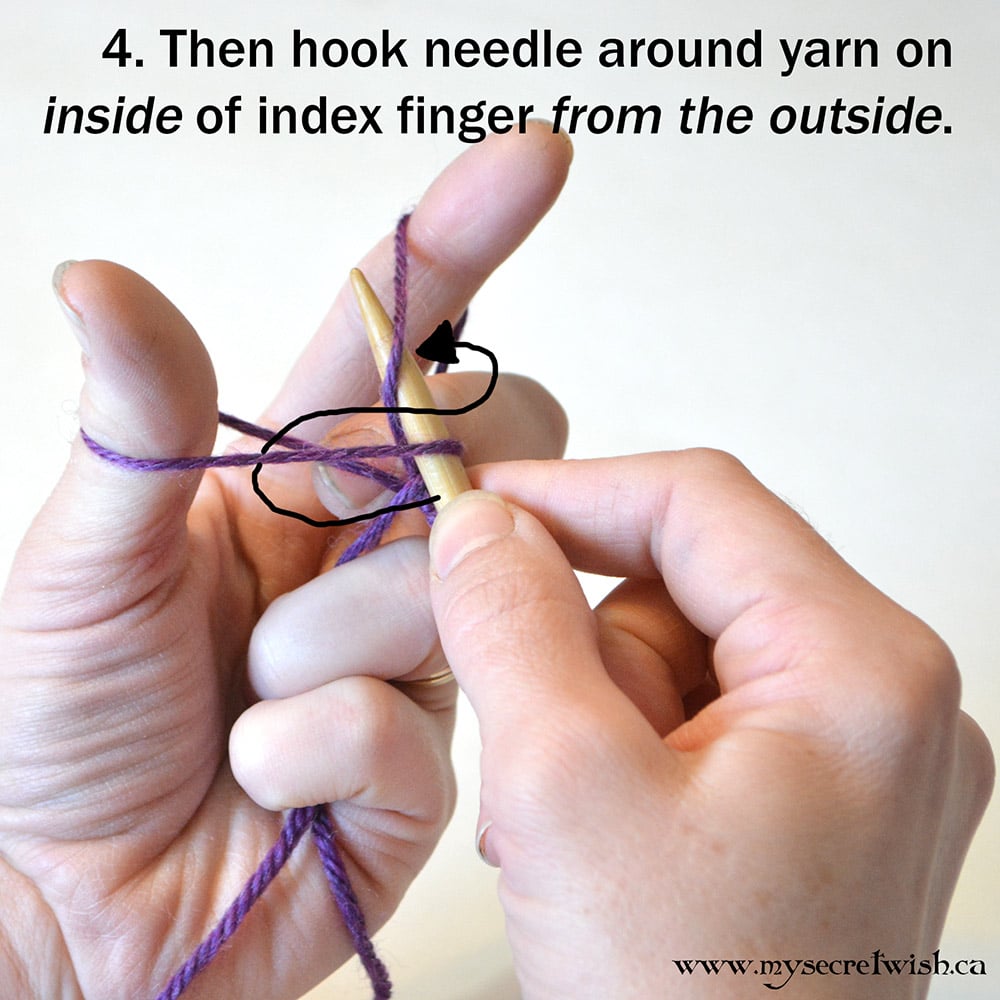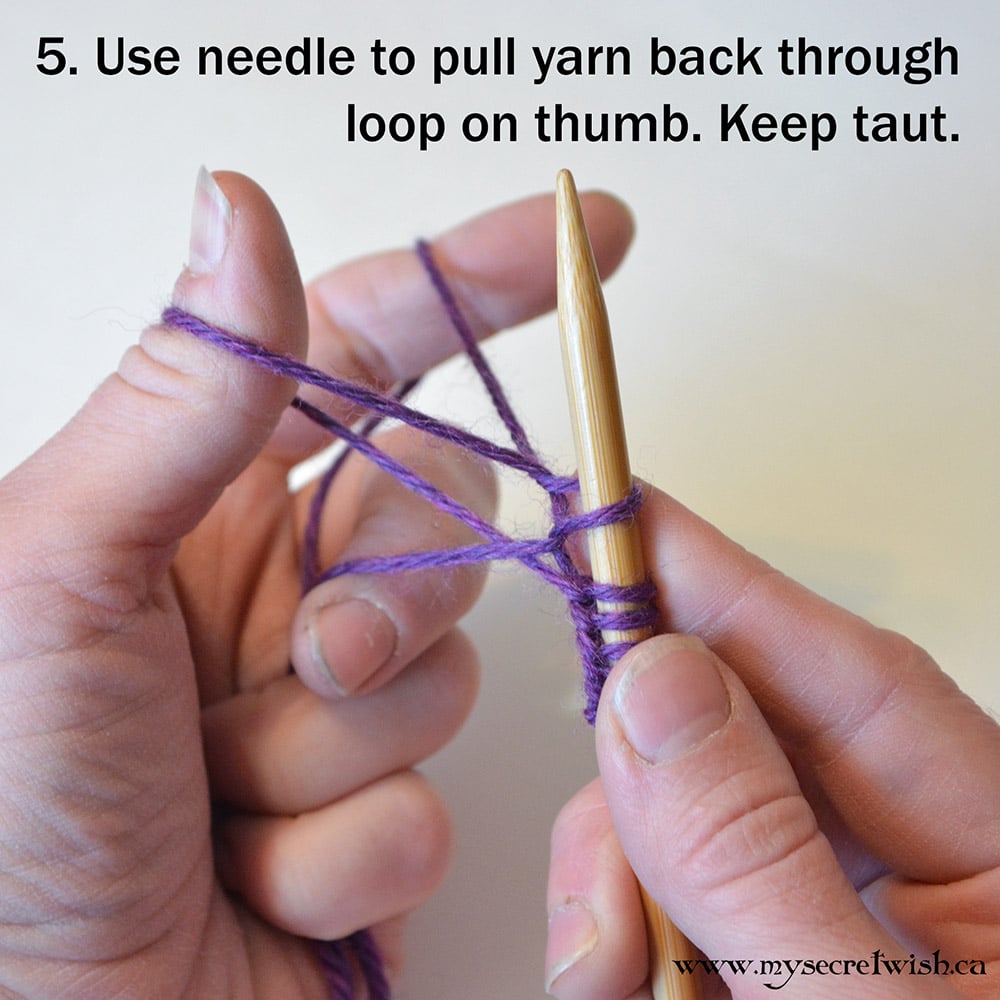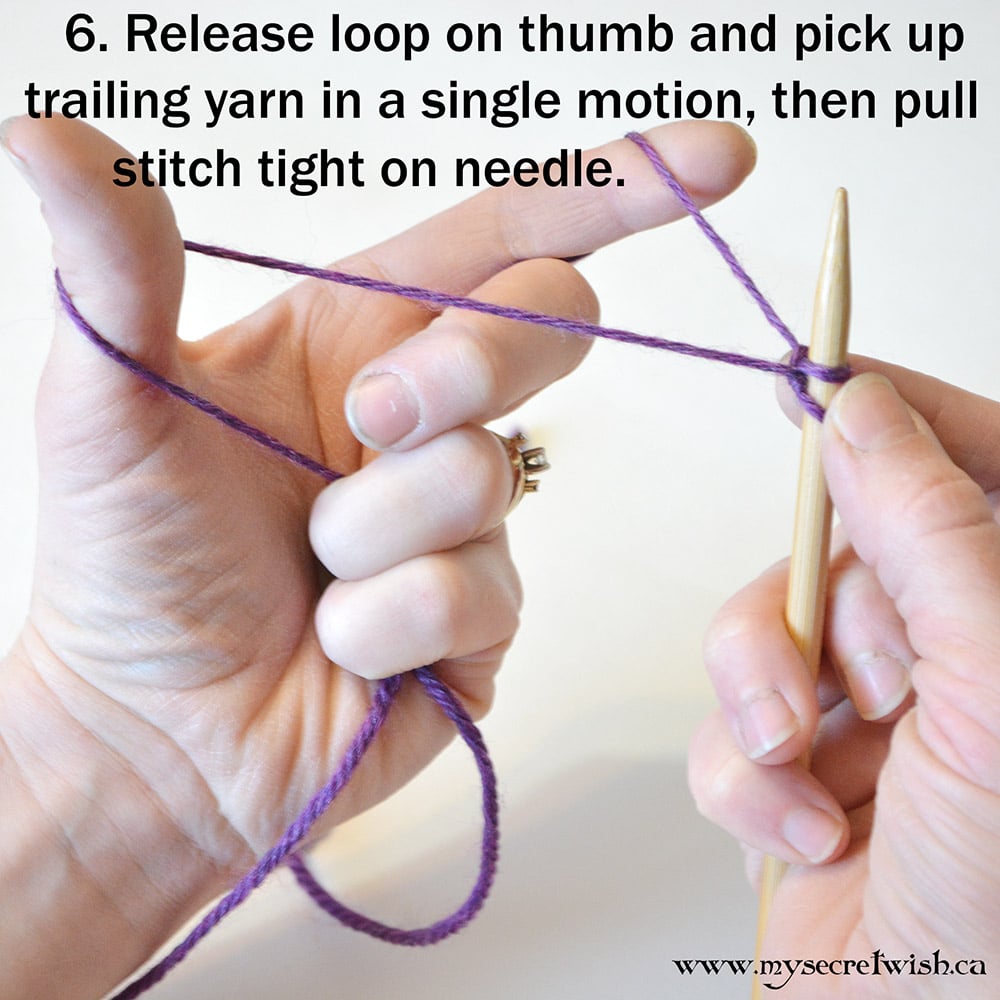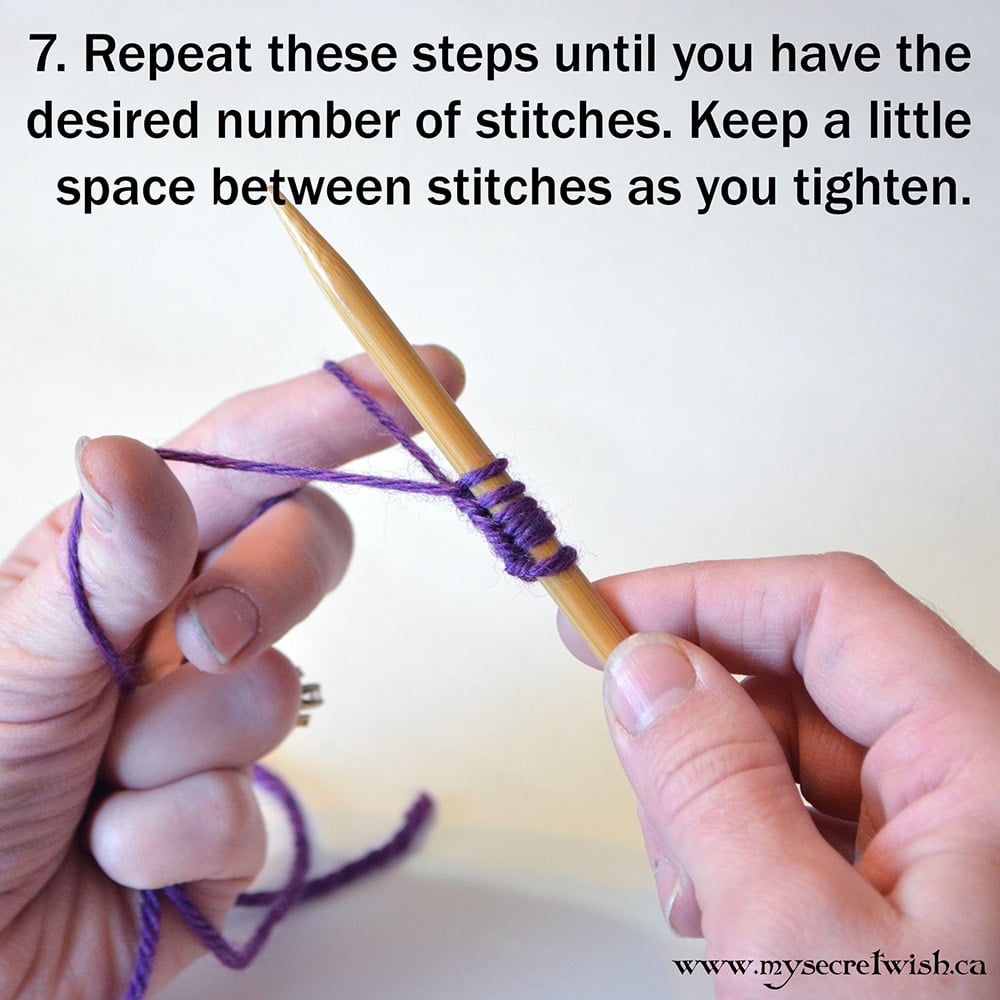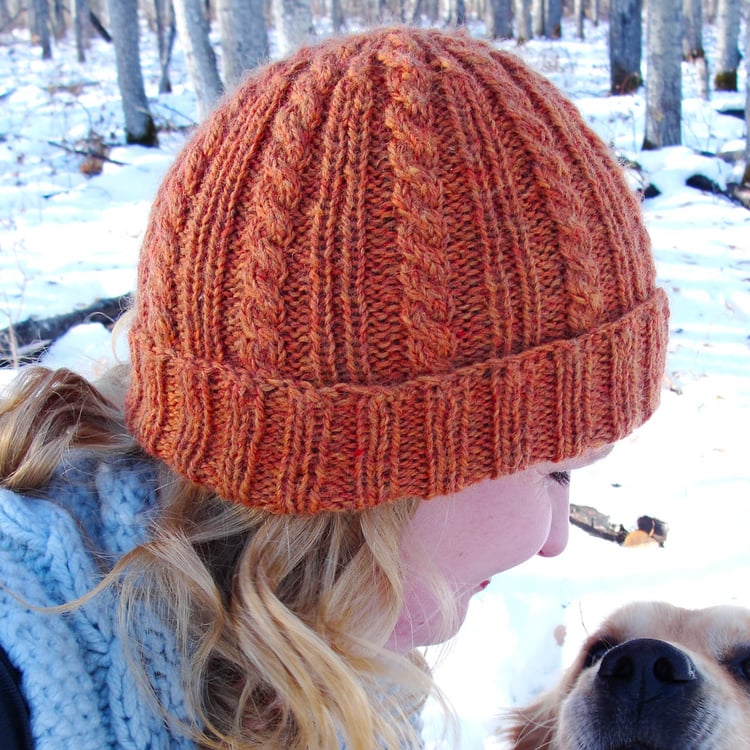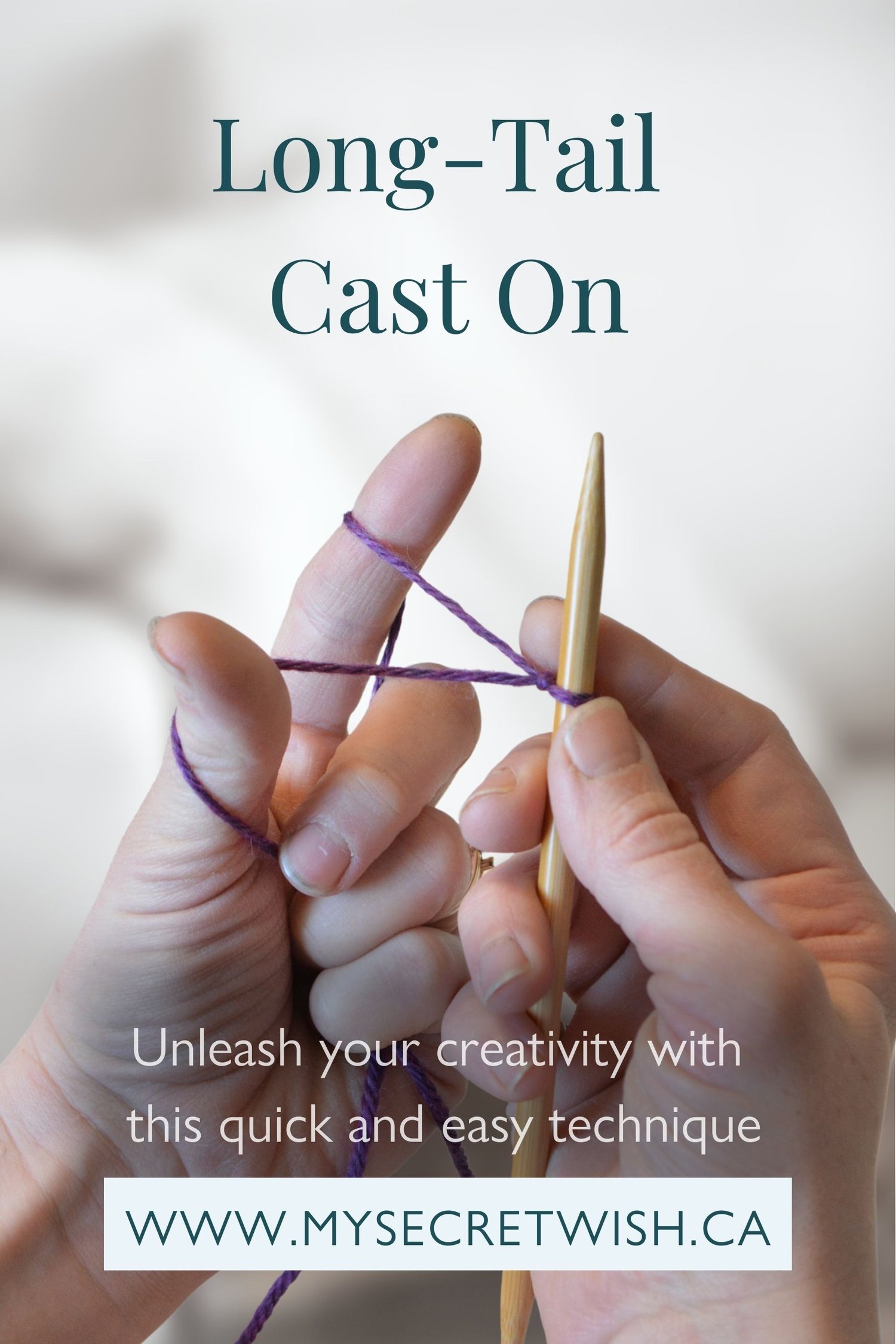
Long Tail Cast On
A firm but stretchy edge suitable for most projects.
This cast on makes a firm but stretchy edge, but its prime advantage is that it is FAST. It is also very easy to not make it too tight. However, if you do find that your first row is too rigid, cast onto a needle three sizes larger than the pattern calls for.
Pros:
- Great all-purpose cast on
- Easy to learn
- Easy to work into
- Firm, stretchy edge
- Fast to make
Cons:
- You need to guess how much yarn you’re going to use before making it and leave that as a tail. (Approximately four times the length of the finished edge.)
- A little complicated to execute, and if you don’t do it often, you may need a reminder. (Which is why this tutorial is handy to have bookmarked.)
Note that the video has you hold your yarn tail over your thumb, the reverse of my written instructions. I have tried both ways, and see very little difference. Use the way that seems best to you. (Also see my tutorial for How to Make a Slip Knot.)


